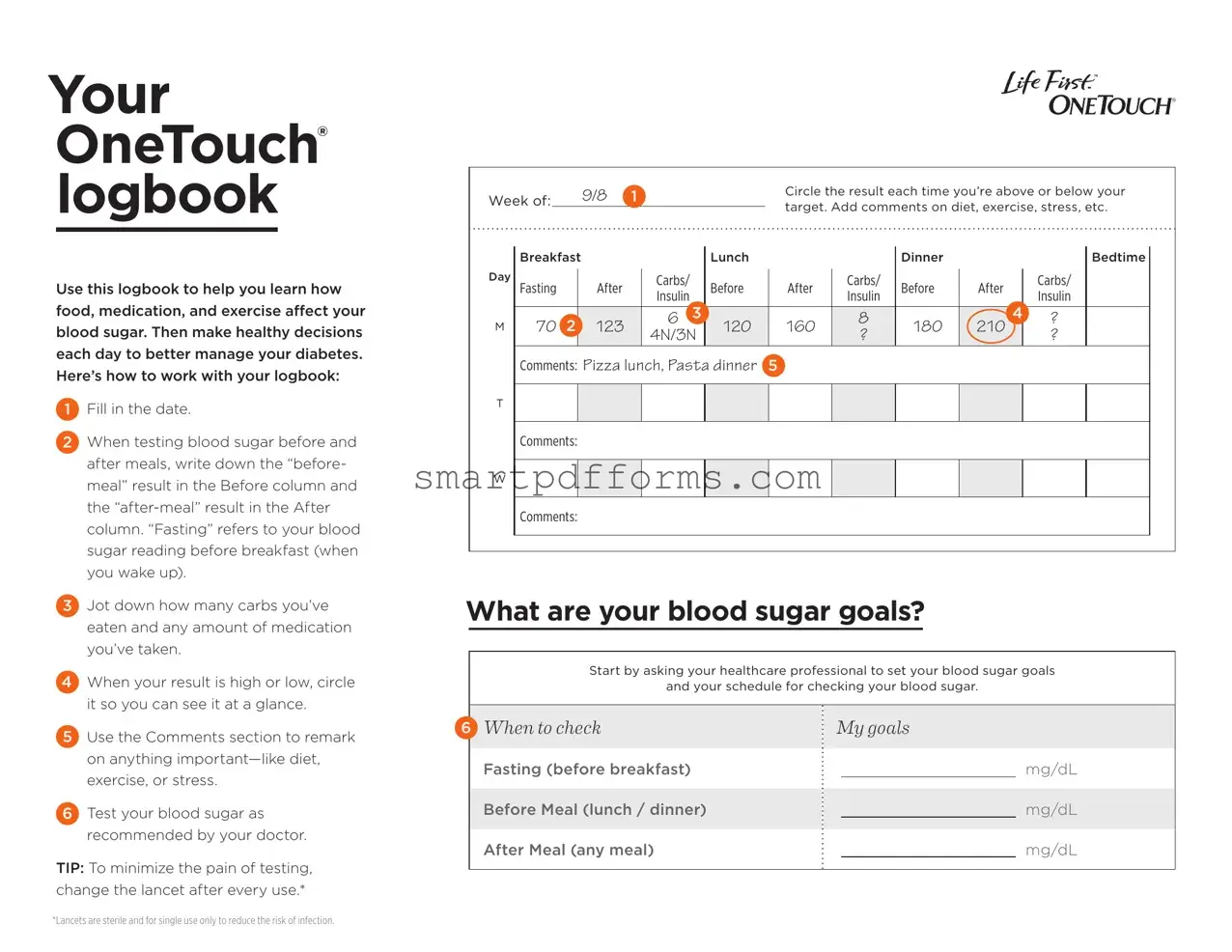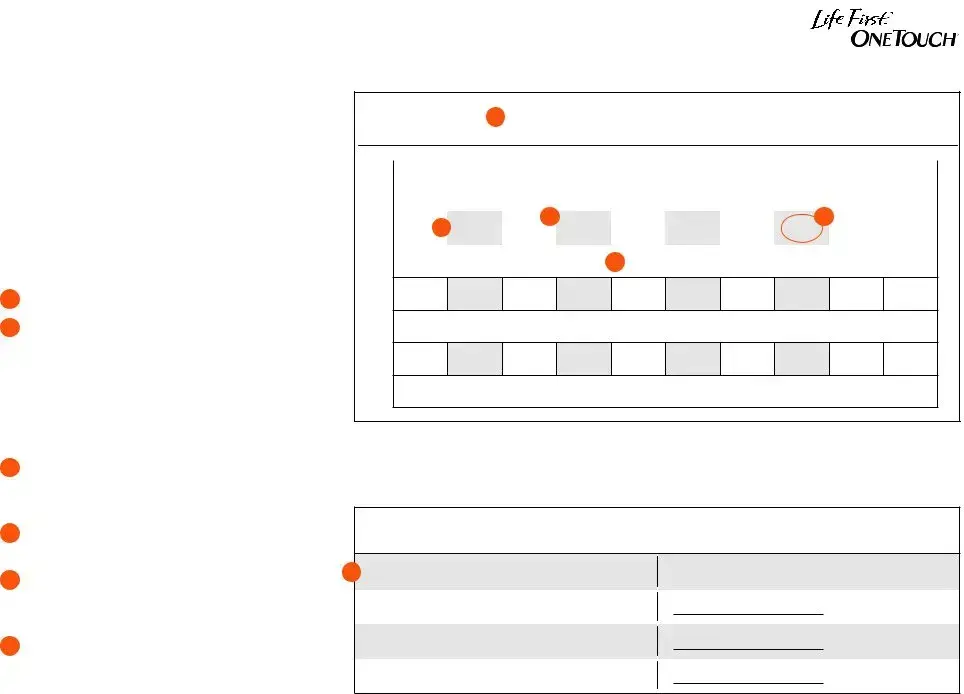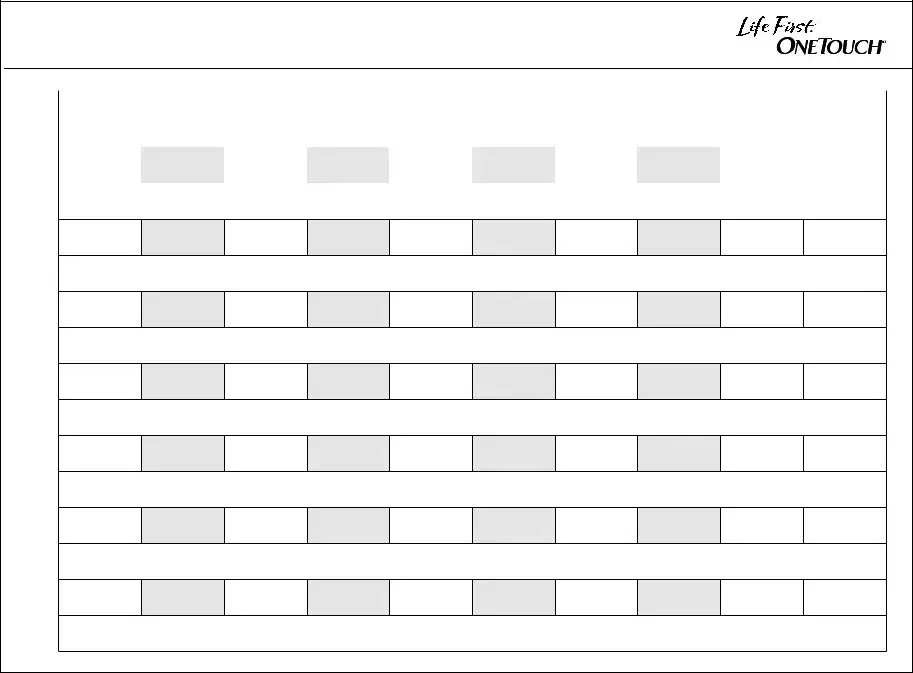Blank Onetouch Logbook Sheet PDF Template
The OneTouch Logbook Sheet form is a vital tool designed to help individuals monitor the impact of food, medication, and exercise on their blood sugar levels, facilitating better diabetes management. It encourages users to meticulously record their blood sugar readings before and after meals, amount of carbohydrates consumed, and medication taken, enabling a comprehensive view of their health patterns. By utilizing this logbook, individuals can identify trends and make informed decisions to optimize their health outcomes. Start managing your diabetes effectively by filling out the OneTouch Logbook Sheet form—click the button below.
Make This Document Now


